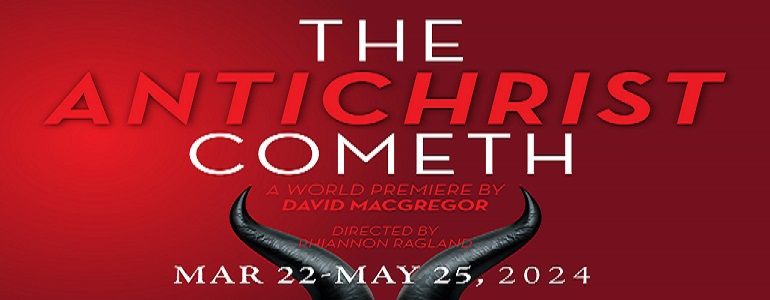By Brett Wheatley, Vice President, Mobility Marketing and Growth, Ford Motor Company
A bustling city’s transportation system can often seem chaotic, especially with more than half of the world’s population moving to urban areas and new mobility services jockeying for space. But as Ford CEO Jim Hackett outlined at last year’s Consumer Electronics Show, our vehicles and other forms of mobility don’t exist independently of each other. In fact, they have broad impact on our communities, cities and the world.
That’s why our team here at Ford is working with cities to help transform people’s lives in profound ways. This includes exploring how autonomous technology can be part of an urban transportation network and weaving together different transit operations to create a better system for all. But it also means developing tools that help cities easily visualize and understand their entire transportation system so they can make better decisions for their communities.
This was the intention behind our collaboration with the city of Ann Arbor, Michigan to pilot our Ford City Insights Platform. This suite of advanced software tools allows cities to explore and help solve a variety of mobility issues in a dynamic way not offered before. Today, following successful tests with Ann Arbor, we are expanding the use of these tools to six more U.S. cities, including Austin, Texas; Indianapolis, Pittsburgh and Detroit.
By leveraging parking, transit, traffic, safety and census data, our City Insights Platform allows city planners to visualize their entire mobility ecosystem and helps them explore various solutions before implementing them in the real world.
Weaving together all the data that’s needed to make a platform like this possible isn’t easy, which is why collaboration is so important. We teamed up with the Ann Arbor Area Transportation Authority, the Downtown Development Authority and Ann Arbor SPARK, as well as the Michigan Economic Development Corporation and the University of Michigan Transportation Research Institute to help determine the best way to not only synchronize the data, but also ensure privacy is maintained every step of the way.
One of the first things Ann Arbor wanted to analyze was its parking infrastructure. Home to a large hospital system, a prominent university, and a bustling downtown that city data shows is growing by 11 percent every year, Ann Arbor officials naturally wanted to know if there were enough parking spots to accommodate all the traffic flowing through the city.
 With the Ford City Insights Platform, Ann Arbor planners were able to get a comprehensive view of all city parking — data that previously was not available in one place — including city- and university-owned parking structures, as well as street-side parking spaces. They were able to visualize traffic flow during an average 24-hour period and easily see how parking was utilized — whether people were interested in street parking, hunting for spots in various garages, or simply passing through downtown.
With the Ford City Insights Platform, Ann Arbor planners were able to get a comprehensive view of all city parking — data that previously was not available in one place — including city- and university-owned parking structures, as well as street-side parking spaces. They were able to visualize traffic flow during an average 24-hour period and easily see how parking was utilized — whether people were interested in street parking, hunting for spots in various garages, or simply passing through downtown.
Initially, it was thought the city needed more parking, but the analysis showed it would be better to find ways to inform drivers of openings and make access to parking easier — still a challenge to be solved, but a less expensive one to be sure. You can just imagine how cities considering these types of big-budget questions can improve their decision-making with this kind of analysis.
“Ann Arbor SPARK is pleased to have had the opportunity to bring together these partners to accomplish an incredible collaboration that broke down silos, set the foundation for future partnerships, and ultimately works to improve access and mobility in the city,” said Komal Doshi, director, mobility programs, Ann Arbor SPARK. “This initiative provides us with a systems-based approach to accessing data driven insights, simulating and deploying mobility initiatives that will improve access in our community.
“We believe that Ann Arbor’s living lab environment presents a real and exciting opportunity for startups and established brands alike to collaborate to advance the connected, autonomous, shared and electric vehicles industry,” she added. “It opens new markets to Ann Arbor companies and attracts new companies and talented individuals to our region.”
And our work together went beyond parking. Safety is also a top priority for Ann Arbor and many other cities, especially as crashes with pedestrians increase even though city infrastructure and vehicles get safer. Using the Safety Insights tool in the Ford City Insights Platform, cities can combine crash data from police reports and other sources with our connected vehicle data to help identify locations with a high likelihood of accidents. And since not every dangerous encounter or near-miss is documented by a police report, our platform helps give planners the ability to see a more complete picture of road safety.
 The unique addition of connected vehicle data gives planners insight into driver behavior (aggregated and anonymized) such as where people are hitting the brakes harshly or accelerating unexpectedly — that could mark dangerous intersections or roads. Planners can use this additional insight to decide where to focus their efforts as they work to improve safety.
The unique addition of connected vehicle data gives planners insight into driver behavior (aggregated and anonymized) such as where people are hitting the brakes harshly or accelerating unexpectedly — that could mark dangerous intersections or roads. Planners can use this additional insight to decide where to focus their efforts as they work to improve safety.
“This collaborative project highlights the significant opportunities that public-private partnerships bring to our communities,” said Trevor Pawl, senior vice president of business development, Michigan Economic Development Corporation. “By coming together with our partners, we’re able to more effectively identify and create innovative mobility solutions that address today’s most pressing transportation challenges helping to improve the quality of life of citizens here in Ann Arbor, across our state and around the nation.”
The City Insights Platform also can be used to help improve the efficiency of city services. Ann Arbor officials tested this functionality by asking us to study their alleys, those secret pathways whose travelers can cause unintended consequences for the city. With delivery trucks, residents and pedestrians sharing the alleys with vehicles that provide city services, such as garbage trucks, it’s easy to imagine accessibility becoming a problem. If a garbage truck can’t enter an alley as part of its normal route, that doesn’t just create traffic. It costs the city money and negatively impacts the quality of life for residents and businesses.
This is clearly an important issue to Ann Arbor. So, in addition to the Ford City Insights Platform, our internal research experts jumped in to equip some alleyways with sensors that identify how people and vehicles enter, and at what times. Access to this type of data can help planners decide how best to regulate traffic, save money, and keep people safe. After an initial test, we’re now expanding this research to study more alleyways and understand how they can be better integrated in the city’s transportation network.
To really bring all this data to life for our partners, we developed the City Insights Studio — a digital model concept of Ann Arbor built across six LCD screens and complete with miniature, 3D-printed buildings. This interactive tabletop offers a dynamic way to visualize information that may not jump out at you from a spreadsheet, such as transit accessibility by neighborhood. But it can also display analytical insights and run simulations from all the various tools we’ve discussed so far. By bringing all this data into a single physical space, we can offer local officials across departments a new way of looking at how their city moves.
“Bringing together our teams for people’s shared travel information has potential to lead to greater innovations in mobility community-wide,” said Julia Roberts, regional planner for TheRide, which operates the public transit system in Ann Arbor.
At Ford, we’ve been working hard to make cars safe and enjoyable for more than a century. But just as no person can truly isolate themselves from the world, we are now seizing the opportunity to help harmonize city transportation systems threatened by gridlock. We are collaborating closely with cities to find a better way forward — a way that brings all stakeholders together in an easy-to-use, data-driven environment that can help make our cities safe, more livable and accessible, as well as drive new opportunities for multiple generations to come.









